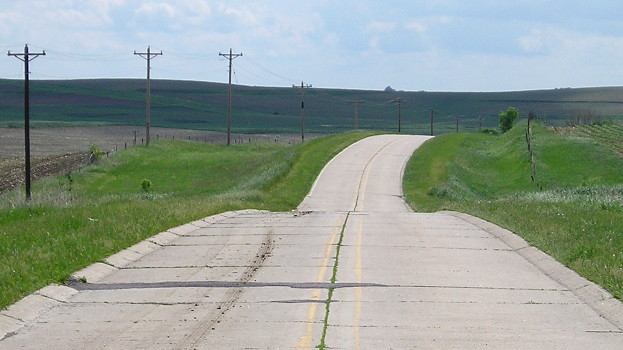
June 4, 2014: This concrete on old US 20 east of Cushing is from 1932. Old 20 west of Cushing to Sioux City was paved by 1924.
If that headline has you clicking for more, you’ve come to the right place, or at least the link to the right place.
A presentation at the 2013 Iowa Better Concrete Conference (second only to the Blue Ribbon Bacon Festival in ticket demand, one must presume) delved into Iowa’s “rich history of concrete paving.” Included in the history is construction on Correctionville Road in the 1920s that predates designation of the route as US 20.
The 2013 presentation is by the same DOT engineer, Todd Hanson, who created a 2009 report marking a century of concrete use in Iowa. According to those, the oldest still used today is Eddyville Cemetery Road — this now-dead-end stub right beside new US 63. Both reports mention a segment of “Moscow Road” being the second-oldest in current use, but this is NOT County Road X54 (which has that for its E911 name). The road being referred to runs west of the unincorporated town of Moscow, named River Street locally and 112th Street in the county system. It was part of the River-to-River Road in 1910, which later became US 32, and was bypassed in 1930. (The Muscatine County engineer helped me clear this up.)
There’s a reason Iowa’s association with concrete is so deep. From Discovering Iowa’s Historic Transportation Milestones (1999) (PDF):
Iowa’s first paving job using asphalt concrete was completed in 1928. The contractor required that a “royalty” fee be paid on the project. Fred White, chief engineer for the Highway Commission at that time, said the payment of royalty fees by the highway department would never happen again. Thus, it wasn’t until the 1950s that asphalt concrete was again considered for use on primary roads through the regular state construction lettings.
